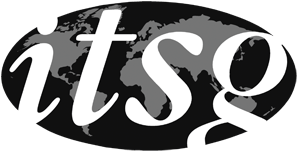Corporate Tax Guide: China

Members:
- Thomas Lee (TLP GROUP)
- P.Y. Ng (TLP GROUP)
- Hongwei Ding (ZhongHui Certified Tax Agents Co., Ltd.)
- Erhui Guo (ZhongHui Certified Tax Agents Co., Ltd.)
- Jin Guo (ZhongHui Certified Tax Agents Co., Ltd.)
- Yi Huang (ZhongHui Certified Tax Agents Co., Ltd.)
- Peize Jin (ZhongHui Certified Tax Agents Co., Ltd.)
- Yukui Liang (ZhongHui Certified Tax Agents Co., Ltd.)
- Xiangwu Lin (ZhongHui Certified Tax Agents Co., Ltd.)
- Fengmei Liu (ZhongHui Certified Tax Agents Co., Ltd.)
- Jufang Liu (ZhongHui Certified Tax Agents Co., Ltd.)
- Yang Sun (ZhongHui Certified Tax Agents Co., Ltd.)
- Jianmei Wang (ZhongHui Certified Tax Agents Co., Ltd.)
- Weifeng Wu (ZhongHui Certified Tax Agents Co., Ltd.)
- Liping Xu (ZhongHui Certified Tax Agents Co., Ltd.)
- Yu Yang (ZhongHui Certified Tax Agents Co., Ltd.)
- Qiang (Jason) Yu (ZhongHui Certified Tax Agents Co., Ltd.)
- Xiaoqiang Yuan (ZhongHui Certified Tax Agents Co., Ltd.)
- Zhongxing Yuan (ZhongHui Certified Tax Agents Co., Ltd.)
- Jianjin Zhang (ZhongHui Certified Tax Agents Co., Ltd.)
- Guoqing (Eric) Zhao (ZhongHui Certified Tax Agents Co., Ltd.)
- Wei Zheng (ZhongHui Certified Tax Agents Co., Ltd.)
|
1. Country
The information is valid for the entire country except where indicated. For example, in the case of Malaysia, Labuan is part of Malaysia but has a special tax regime, so this is noted. |
China – entire country. | ||||||||||||
|
The corporate tax rate shown is the typical corporate tax rate that a domestic corporation owned by non-resident persons would pay. The tax rate does not include withholding tax on dividends, but does include a distribution tax shown separately if applicable. Certain countries have a low corporate tax rate, but charge an additional tax when a dividend is distributed. Because this tax is paid by the corporation, and not deducted from the amount of the dividend itself, it is not a dividend withholding tax. As a result, it typically cannot be reduced by an international tax treaty. |
Basic rate 25% - Applicable for (a) residential enterprise, and (b) non-residential enterprise that has site or organization in China, and income relates to the site or organization. Low rate 20% (practical rate 10%) - Applicable in the following circumstances:
| ||||||||||||
|
The basis of taxation for a corporation will typically be one of:
|
Territorial and remittance. | ||||||||||||
|
Where non-resident corporation carries on business in a country, business profits may be subject to corporate tax. In addition, a branch profits tax may apply in lieu of dividend withholding tax. This branch profits tax applies to the after tax profits, typically at a fixed percentage. An international tax treaty may reduce the rate of branch profits tax, typically to the rate provided for dividend withholding. |
No branch tax in China. | ||||||||||||
|
The common forms of business entity are noted. In addition, the entities which are flow through entities for U.S. tax purposes are indicated. |
Except Sole Proprietorship and Partnership, all business entities obtaining income in China are subject to the corporate tax law. | ||||||||||||
|
Capital gains may be fully taxed, partially taxed or not at all. In certain countries, an exemption, called the participation exemption, will apply to exempt from tax a capital gain from disposition of a substantial holding of shares of a subsidiary. Where a participation exemption is applicable, it is noted together with a summary of the main conditions. |
Capital gains are commonly included in taxable income and taxed at the normal rate. | ||||||||||||
|
Certain countries allow group taxation, otherwise known as consolidated tax filing. Here the tax returns of a group of corporations in the country may be combined together, which can be useful. If group taxation is permitted, it is noted along with the main conditions. |
Group taxation is not allowed except with special permission from the State Council. | ||||||||||||
|
Countries offer various kinds of special exemptions and incentives. Examples are a reduced tax rate, a tax holiday, a tax credit on the purchase of equipment, special accelerated deductions for deprecation, incentives for R&D, and various others. Here the major items are noted. |
| ||||||||||||
|
Many countries have thin capitalization rules which limit or deny the deduction of interest expense in certain circumstances. For example, if debt exceeds three times equity, a proportionate amount of interest expense may not be deductible. Limitations take various forms, restricting the interest expense deduction to a percentage of profit, deeming the debt to be equity and the interest to be a payment of dividends, and various other rules which may blend of these principles. Where a country has thin capitalization rules, they are briefly described. |
Yes. 5:1 debt-to-equity ratio for financial enterprise. 2:1 debt-to-equity ratio for all other enterprises. If an enterprise provides both financial services and other services, it should calculate interest separately in a reasonable way. | ||||||||||||
|
Many countries have transfer pricing rules. They very often follow the OECD guidelines and the arms length principle. Some countries have specific rules which apply in certain cases. In addition, some countries allow for a selection of the most appropriate transfer pricing methodology in the circumstances, while other countries follow a hierarchy of methods, with the CUP method (comparable uncontrolled price) often ranking first. The transfer pricing rules are briefly explained. |
Yes. China follows OECD Guidelines and CUP method ranked first. Threshold: The annual sum of related party purchases and sales is greater than RMB 200 million; the annual sum of other related party transactions is greater than RMB 40 million. | ||||||||||||
|
11. CFC Rules
Many countries tax passive income earned in controlled foreign corporations (CFC’s) on an imputation basis while active income is not taxed. Such CFC rules are usually complex and vary significantly in what is considered passive income, and how foreign tax paid is taken into account. Some countries approach CFC rules on the basis of whether or not the foreign corporation is resident in a low tax jurisdiction or a tax haven. This may be done through a black list of countries. The general overview of CFC rules is described in simple terms. |
Yes. Applies to foreign-controlled entities (more than 50%) that are established in a jurisdiction where the corporate tax rate is at least 50% lower than the China tax rate that would have been applicable under the same circumstances. The China entity is then deemed to have received fully taxable dividends from the foreign entity, in proportion to its participation. | ||||||||||||
|
Profits repatriated by way of dividends from a subsidiary to a parent company are typically taxed in one of three ways:
|
Profit repatriation is normally taxed at a 10% rate, which may be changed by treaties. | ||||||||||||
|
Most countries allow a foreign tax credit based on a formula, typically net foreign income over the net income times taxes payable. This limits the foreign tax credit to roughly the domestic tax otherwise applicable to the foreign income. There are numerous variations and technical rules in the details of foreign tax credit calculations. Where a foreign tax credit is allowed, the general principles are described. |
Yes. It is segregated country by country. Unused deductible credit is 5 years carry forward. Direct deduction is typically used for income tax. For indirect deduction, which is often used by shareholding over 20%, tax levied on dividends can be deducted for a certain amount calculated based on proportion of share held. | ||||||||||||
|
14. Losses
Losses typically can be carried forwards for a period of years, and sometimes can be carried back. Losses may be segregated into capital losses and non capital losses. |
5-year carry forward. Losses from a subsidiary abroad cannot be deducted. | ||||||||||||
|
It is not practical to list all of the tax treaties which a country has in a simple guide like this. Accordingly, a link is provided in each case to the tax treaties. Some countries have entered into Tax Information Exchange Agreements (TIEA). Treaties are more and more containing provisions that limit benefits (LOB provisions). |
LOB: Guoshuihan [2009] No.601 from the State Administration of Taxation states the recognition of beneficiary for treaty. | ||||||||||||
|
Withholding tax rates vary considerably from treaty to treaty, and countries may have domestic exemptions applicable in certain circumstances (for example copyright royalties, interest paid to arm’s length persons, etc.). A table shows the typical rates but cannot adequately summarize all of the details. The applicable treaty should be consulted. |
| ||||||||||||
|
17. Taxation Year
Some countries allow for the selection of year-end while other countries specify a particular year-end which all business entities must have. Normally the taxation year cannot exceed 12 months. Where it can exceed 12 months, this is noted. |
Corporate income is calculated on a yearly basis from 1 January to 31 December. | ||||||||||||
|
This is the due date for filing a tax return. Where extensions are available, this is noted. |
Prepay tax return is due 15 days after the end of the month or season. Final settlement tax return is due before 31 May the next year. | ||||||||||||
|
19. Tax Instalments
The typical tax instalment requirements are noted. |
No. | ||||||||||||
|
20. Payment of Tax
This is the date when the corporate tax owing for the year must be paid. It may be different from the tax return filing due date. |
Tax should be prepaid monthly or seasonally. The final settlement would be made in every year-end. | ||||||||||||
|
This is the period after which the tax department cannot in normal circumstances reassess a taxation year. It is sometimes referenced to the end of the taxation year and sometimes to the date of the first assessment of that taxation year. |
| ||||||||||||
|
If a country has exchange controls, this is noted, together with the main requirements. |
For non-residential corporation investment. In China, there are several exchange control rules concerning on account setting and capital input and output. | ||||||||||||
|
23. VAT
A VAT tax system typically provides that the supply of goods and services is classified as taxable, tax exempt, or zero rated. Where a business is engaged in an activity which is taxable, it must charge VAT on its revenue, and can claim a refund of VAT on its expenditures. Where the activity is exempt, it does not charge VAT on its revenue, and cannot claim back VAT paid. Where the entity is engaged in activities which are zero rated (typically agriculture, food services and exports), then it can claim back VAT which it has paid on its expenditures, and does not charge VAT on its revenue. If a country has a typical VAT system, this is noted. If a country has no VAT system but a sales tax system, this is indicated. Some countries may have a mixture, and taxes may apply at different levels (federal and state for example). |
VAT rates vary from 0% to 17%, depending on different services and goods provided and sold. | ||||||||||||
|
Stamp duty, or land transfer tax, can apply on such things as the transfer of shares, land, or the issuance of bonds or debentures. This is described together with the applicable rates. |
Stamp duty is applicable in all land and real estate transfer cases in China. Stamp duty rate varies from 3% to 5%, depending on area where the transfer occurs. | ||||||||||||
|
25. Capital Tax
If capital tax is payable, this is described. Capital tax may apply in specialized industries, such as banking and insurance, even if a country does not generally apply a capital tax to corporations. |
None. | ||||||||||||
|
26. Other Taxes
Where significant, other taxes are noted. |
None. | ||||||||||||
|
Anti-Avoidance Rules take many forms, the most common ones are a general anti-avoidance rule, treaty shopping limitations, the requirement for economic substance (or a business purpose in carrying out transaction) and specific anti-avoidance rules for particular purposes. A very brief overview of the anti-avoidance rules is described. |
Yes. If the transaction aims at avoiding, reducing or deferring tax payable, tax authorities could adjust taxable income. Misuse of tax preference, tax treaty, corporate organization, tax haven and any arrangement without reasonable commercial object. | ||||||||||||
|
Where a non-resident person holds shares of a corporation established in the country listed, the capital gain which results may be taxable or not taxable depending on the circumstances and, possibly, the existences of an international tax treaty. The general rules are noted. |
Direct sale of shares by non-resident is taxable at the rate of 10%. Sale of China business assets is taxable. | ||||||||||||
|
Where a corporation is acquired through the purchase of shares, sometimes a step up is allowed so that the cost of its assets can be revalued. The main rules are briefly summarized. |
No similar rules in China. | ||||||||||||
|
30. Use of Rulings
In some countries, rulings are commonly used (and sometimes even required). In other countries the system is either unavailable or not commonly used except in special circumstances. |
Rulings are commonly used in China. | ||||||||||||
|
31. Other
Other important aspects of the tax system are noted. |
None. |

 Login
Login

















































